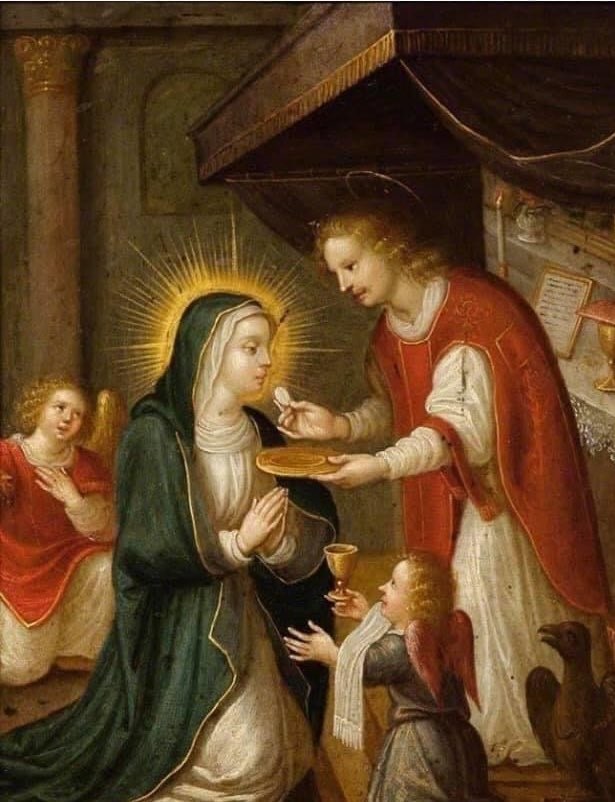
Note the altar cards, the maniple, the little angel with the chalice and the houseling cloth over his arms.
Let me just say, to tweak the tweakable, that Masses celebrated by St. John (who died c. 100) were just like that, with the 1570 Missale Romanum (or maybe the 1474 Missale Romanum or Ordo Missalis secundum consuetudinem Curiae Romanae). Surely the angels could have arranged that somehow. I mean.. since Mary’s house could be moved around…. If the “Tridentine Mass” was good enough the Blessed Virgin, it’s good enough for me. And Christ spoke Latin. So there.
NB: the chalice of the Mass is still on the altar. In the pre-62 Roman Missal there was a somewhat neglected rubric about Communion for the people. A server with a chalice or vessel of wine and water and a towel would follow the priest so that people could purify their lips and mouths. In the old Caerimoniale Episcoporum people were directed to go to the Epistle side after Communion and purify their lips and mouths. This is something that Easterners do after Communion. In the Latin Church this custom continues in the Traditional Rite of Ordination of Priests. The newly ordained, who concelebrate with the Bishop who reads the Canon aloud so that the new priests can say it at the same time, after their Communion then drink unconsecrated wine from a chalice to purify their mouths.
Here is a modern version of the scene by the talented oddball Giovanni Gasparro. He has both the chalice and the Host. Does the chalice contain the Precious Blood? Could be. I suspect that the painter doesn’t know about that old rubric, though we see the second chalice in old paintings.
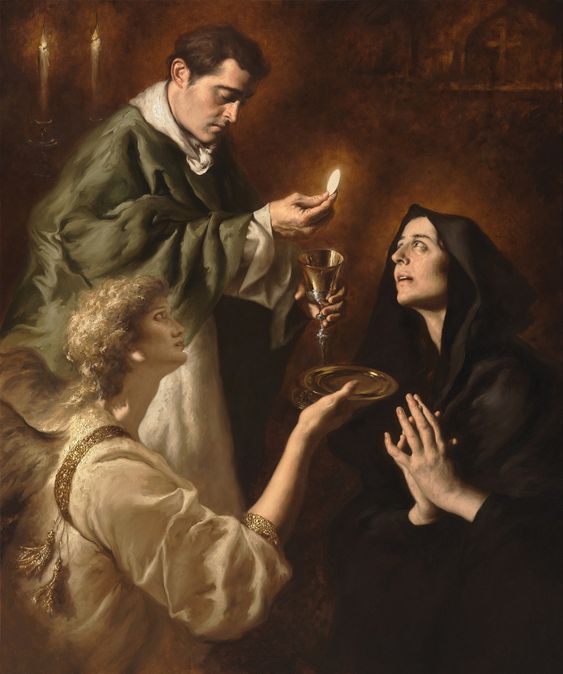
What I like about this, is the angelic deacon (NB: tassels) or altar boy, at least I think it is an angel, perhaps Gabriel, looking at the Host which he cannot receive.
Angels are unfathomably above us in the order of things, but, amazing as they are, they cannot receive sacraments, they cannot receive the Eucharist.
Here is a late 16th c. painting in the Hermitage (which I would love to visit before I die). Note the maniple, but no cards. I wonder if this isn’t the Rite of Toledo, Mozarabic. I’m not sure if they used altar cards or not. The acolytes are Sts. Polycarp and Ignatius, surely of Antioch, not Loyola.
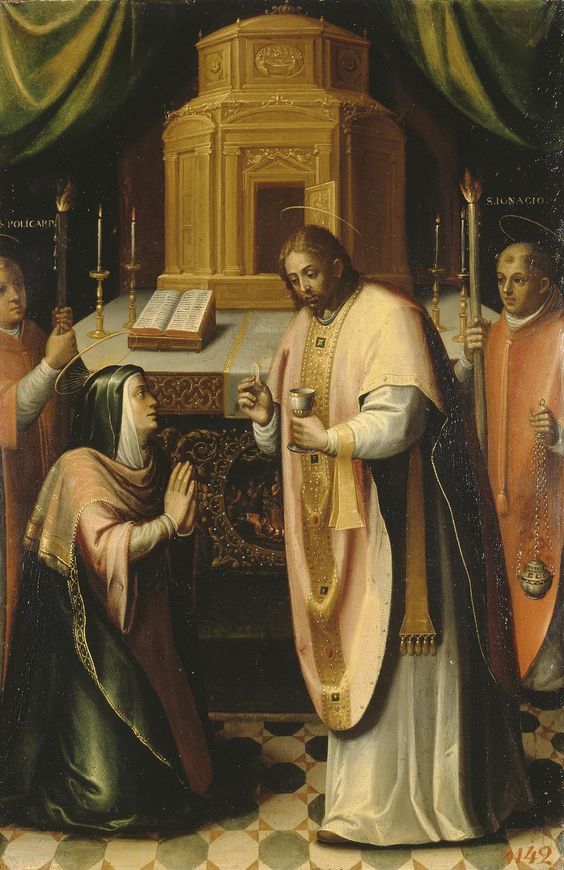
He is holding both the chalice and the Host. We don’t see the chalice of the Mass on the altar, so this is the Precious Blood. The Mozarabic Rite does have Communion under both kinds.
If you look closely, on the front of the altar there is a relief or painting of the Martyrdom of St. John in Rome at the Latin Gate, when they tried to kill him by boiling him in oil.
The 17th c. Spaniard Alonso Cano gives us his view of the moment.
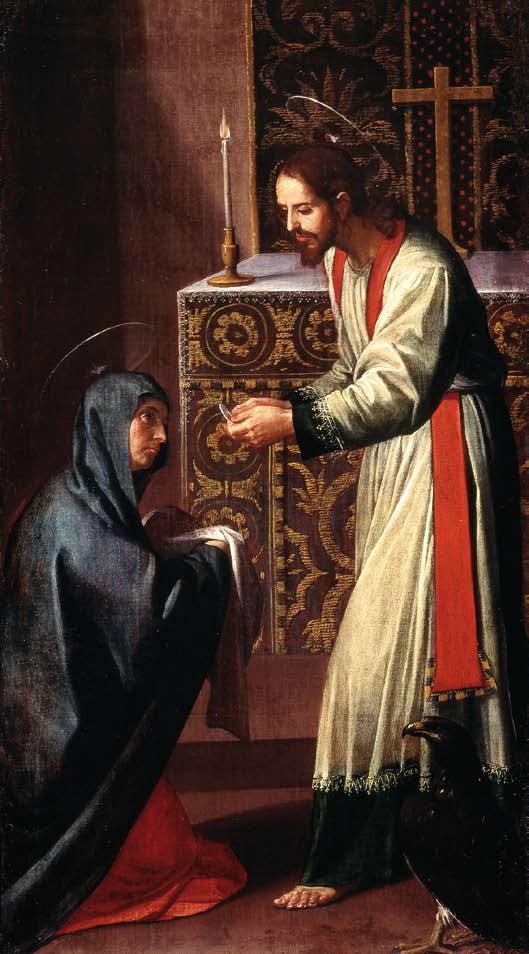
No chasuble. He is barefoot. She has a houseling cloth. The bird stands by, eagle-eyed.
He is holding the Host with both hands. It is almost as if he is a monstrance, holding the Host for a long time so that Mary can contemplate Her Eucharistic Son. You might be tempted to think that this is “Exposition” rather than Communion, but she has the cloth over her hands. I think it is both.
Another version by Alonso Cano, in Genova.
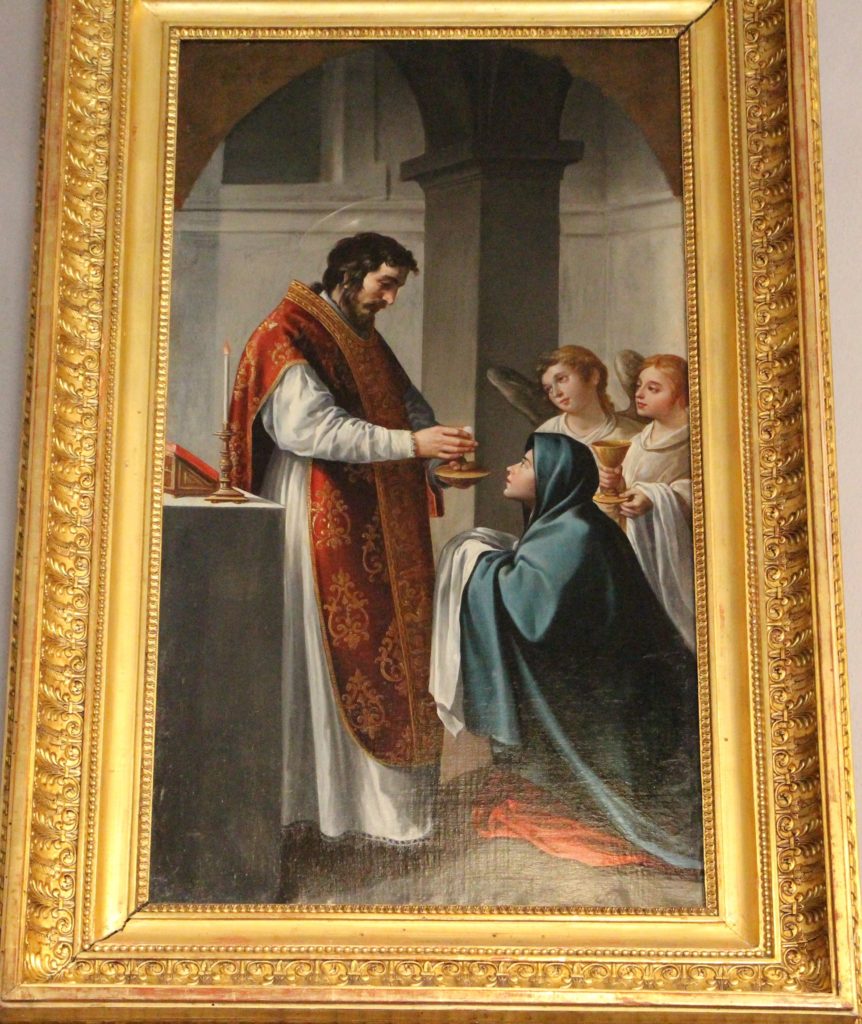
Note again, the angel standing by with the purification cup. She has the houseling cloth.
Something from the German school, now in the Alte Pinakothek München from the school of Johann Andreas Wolff, early 18th c.
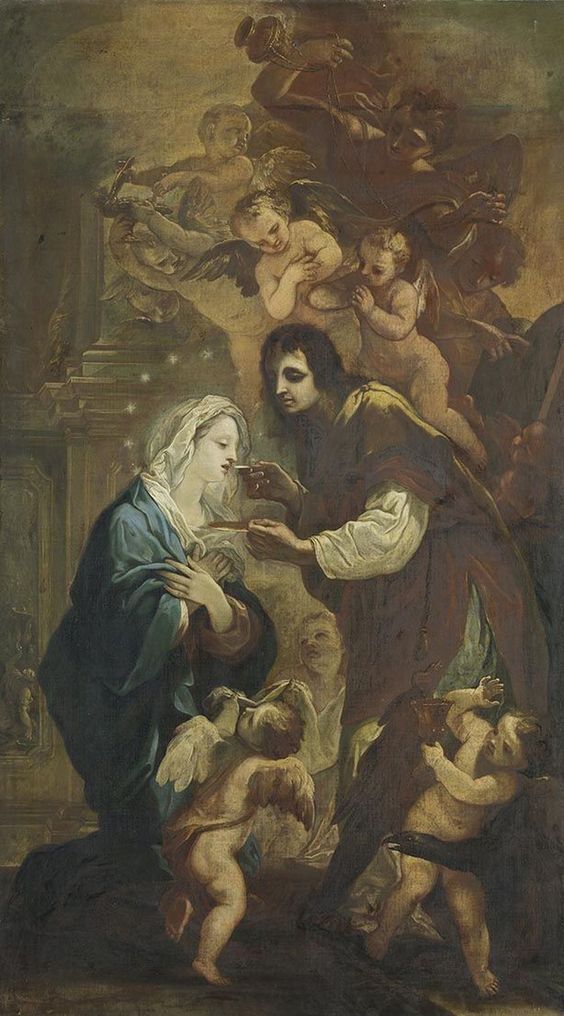
Note that the angels down on the ground have the houseling cloth and the purification chalice. They are so overwhelmed by this awesome moment, the Mother of God receiving her Eucharistic Son, that they can barely contain themselves. Up above, we seem to have larger, older angels, with incense. Perhaps the painter is reflecting in the angelic order what he sees at Solemn Mass in the sanctuary: the older boys handle the incense and the younger ones have the simple tasks.
I’ll conclude with a really interesting image. What’s going on?
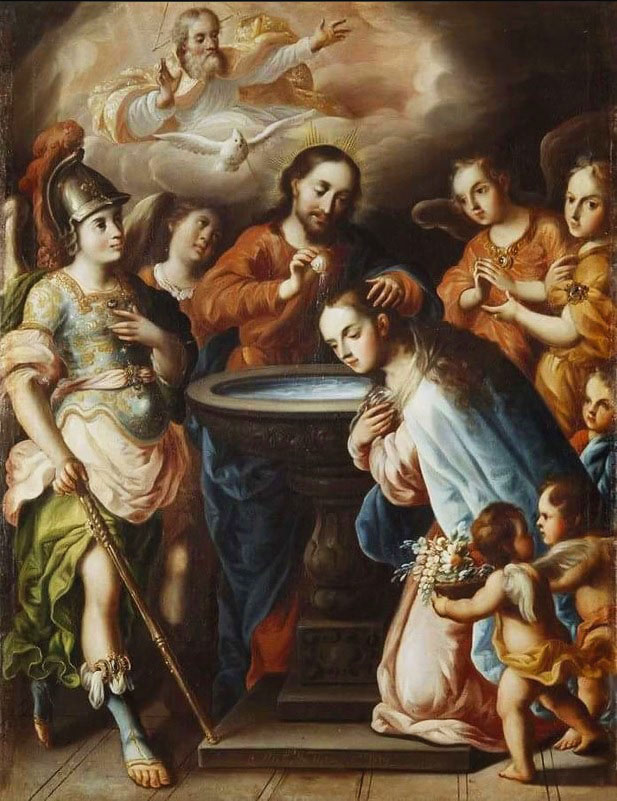
This is El bautizo de la Virgen María by Antonio de Torres (1666-1731). A great example of Mexican Baroque.
Four angels, including the obvious Michael stand by, perhaps he other three are Raphael, Gabriel, and the non-Scripturally named Uriel. One of them, I imagine the Annunciation Archangel Gabriel looks out to us, indicating the scene which we should contemplate. This is not in Scripture, of course. The scenario is inspired – I think – by María de Jesús de Ágreda’s (1602-1665) Mística Ciudad de Dios.
III. 319. The most blessed Lady also asked Him for the Sacrament of Baptism, which He had now instituted, and which He had promised Her before. In order that this might be administered with a dignity becoming as well the Son as the Mother, an innumerable host of angelic spirits descended from heaven in visible forms. Attended by them, Christ himself baptized his purest Mother. Immediately the voice of the eternal Father was heard saying: “This is my beloved Daughter, in whom I take delight.” The incarnate Word said : “This is my Mother, much beloved, whom I have chosen and who will assist Me in all my works.” And the Holy Ghost added : “This is my Spouse, chosen among thousands.”
Here is some Mexican Baroque music from the period of the painting. It is a Mass for 5 voices with violins and oboe by Manuel de Zumaya (+1755), who was a priest. Listen as you contemplate the “Baptism of Mary”.
I guess you can tell that it has been a while since I’ve visited a good museum on a Sunday.
No comments:
Post a Comment
Comments are subject to deletion if they are not germane. I have no problem with a bit of colourful language, but blasphemy or depraved profanity will not be allowed. Attacks on the Catholic Faith will not be tolerated. Comments will be deleted that are republican (Yanks! Note the lower case 'r'!), attacks on the legitimacy of Pope Leo XIV as the Vicar of Christ, the legitimacy of the House of Windsor or of the claims of the Elder Line of the House of France, or attacks on the legitimacy of any of the currently ruling Houses of Europe.